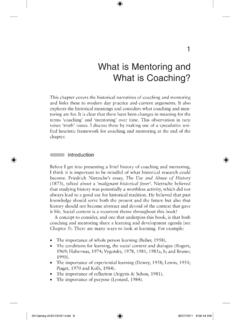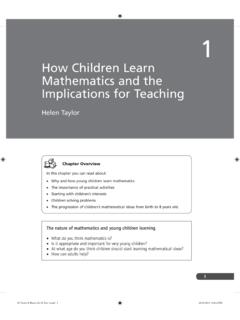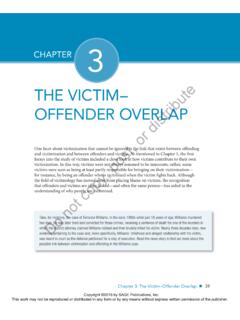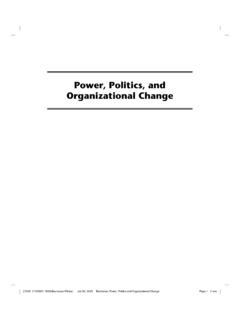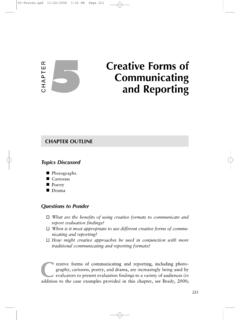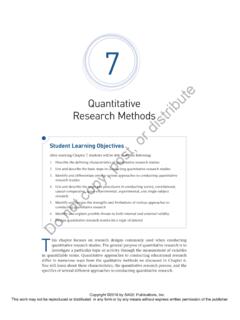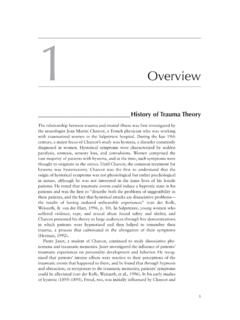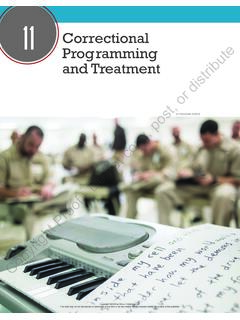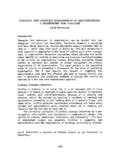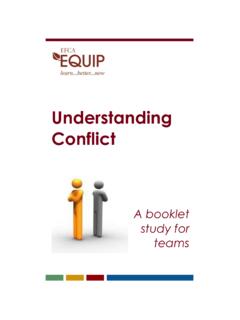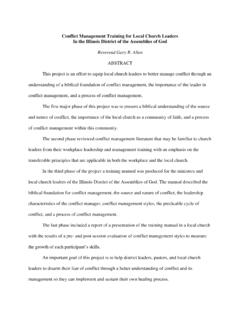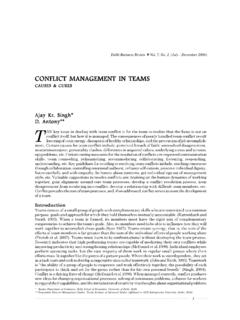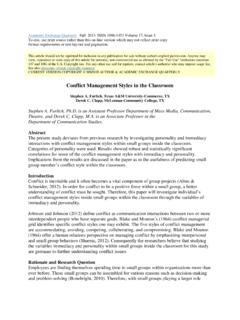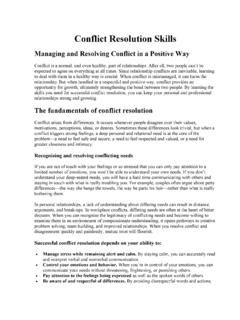Transcription of Peter Wallensteen Understanding ConfliCt
1 SAGE was founded in 1965 by Sara Miller McCune to support the dissemination of usable knowledge by publishing innovative and high-quality research and teaching content. Today, we publish more than 750 journals, including those of more than 300 learned societies, more than 800 new books per year, and a growing range of library products including archives, data, case studies, reports, conference highlights, and video. SAGE remains majority-owned by our founder, and after Sara s lifetime will become owned by a charitable trust that secures our continued Angeles | London | Washington DC | New Delhi | Singapore Peter WallensteenUnderstanding ConfliCt resolUtionfoUrth 33/11/2015 1:02:59 PM1understanding ConfliCt Peacemaking as a New ExperienceSince the Cold War ended there have been more peace agreements than in any period after the termination of the Second World War.
2 Many of these accords cur-tailed violence successfully and transformed conflicts into more constructive rela-tions between states, peoples and groups. Others failed utterly and remained signatures on paper with no effect in the lives of human beings exposed to the dangers of warfare. There is, consequently, a need to understand ConfliCt resolution in a new way. It is not enough for the outside world to ask for negotiations and contacts between warring parties. There is also a need to suggest what the parties should discuss, how they may agree, how agreements can be turned into reality and, not least, how settlements can be made durable and freeing new generations from repeating bitter war experiences.
3 It is, furthermore, important to ask what can be learned for effective ConfliCt prevention, allowing for just aspirations to develop without systematic and deliberate the early 1990s knowledge in ConfliCt resolution for war conditions was limited. There was considerable insight in negotiations in domestic political affairs and in the art of deal-making. Understanding was generated from societies and conditions, which involved little violence and war. It referred to situations of shared values and norms, where few cultural borders were transgressed.
4 However, ConfliCt resolution takes on an entirely different dimension when parties have been trying to kill each other. In the management of ConfliCt between employers and employees there is the threat of strikes and lockouts. This is not the same as when negotiators, their families, relatives, friends and colleagues have been under armed attack by the other side. Involving issues of life and death, war is a qualitatively different form of ConfliCt . Negotiation and 01_Wallensteen_Ch_01_Part 33/11/2015 1:02:09 PMUNDERSTANDING ConfliCt RESOLUTION4peacemaking in ending wars can learn from other experiences but face unique problems.
5 The issues at hand the incompatibilities are central to such an analysis and are likely to concern major questions of society and its direction. Also crucial are the ways to end the fighting. This has to be done without inviting a repetition of war. It also has to meet standards of justice and, at the same time, provide physical security for the opposing sides. There is a need to compensate for sufferings that cannot be compensated or redressed. Norms of human relations have been violently broken, leaving the difficult task of finding sufficiently shared grounds on which to build a new relationship.
6 There is the requirement that the opposing sides be equally committed to viewing an agreement as theirs, and to taking responsibility for implementing it under conditions which may be novel to the society. Thus, there are reasons for analysts to believe that peacemaking after war is a losing proposition. Still, it takes place and it seems to be working. How this is possible is what this book is all in the early 1990s did the world start seriously to attend to peacemaking after war. During the Cold War, negotiations and agreements on issues that involved the use of weapons were few and limited.
7 There was a peace agreement on Indochina in 1954, but, like its successor in 1973, it was quickly undermined. There were also settlements between India and Pakistan after the 1965 and 1971 wars, achieving a reduction in ten-sion, but not an end to the incompatibility. The emphasis in the major power confronta-tion of the time, the Cold War, was victory, not compromise. The ideological components and the historical record made the Cold War an existential battle. It was waged between right and wrong, democracy and dictatorship, capitalism and socialism, liberation and imperialism.
8 Compromise was seen as morally questionable. The same attitude was reflected in other disputes of the period, whether related to the Cold War or were reasons for this aversion to negotiated resolution. The memory of the flawed and failed agreement at Munich in September 1938 haunted some of the actors. At that time, the democratic countries (Britain and France) agreed with a totalitarian one (Nazi Germany) on the dissolution, rather than the protection, of a small, democratic country, Czechoslovakia. Even so, Hitler chose not to honour the agreement.
9 It became part of a rapid series of developments towards major war. To Western leaders it showed the futility of compromising with dictatorships. Appeasement became a synonym for negotiations. The Soviet leadership may have drawn similar conclusions from its deal with Nazi Germany in August 1939, the agreement that made the Second World War inevitable. Although it aimed at pre-venting a war between the two by dividing influence in Eastern Europe and the Baltic region Germany attacked the Soviet Union less than two years later.
10 Thus, both sides in the Cold War that followed the joint defeat of Nazi Germany could agree on the dangers of making peace with an opponent. For both, the conclusion was that lasting peace required solid victory. Consequently, there were few agree-ments on political issues in armed conflicts in the decades that is, then, remarkable to find that negotiations were still possible in a particular sphere: arms control and disarmament. There were agreements banning nuclear weapons tests, restricting the production of missiles, and even eliminating whole categories of weaponry.
